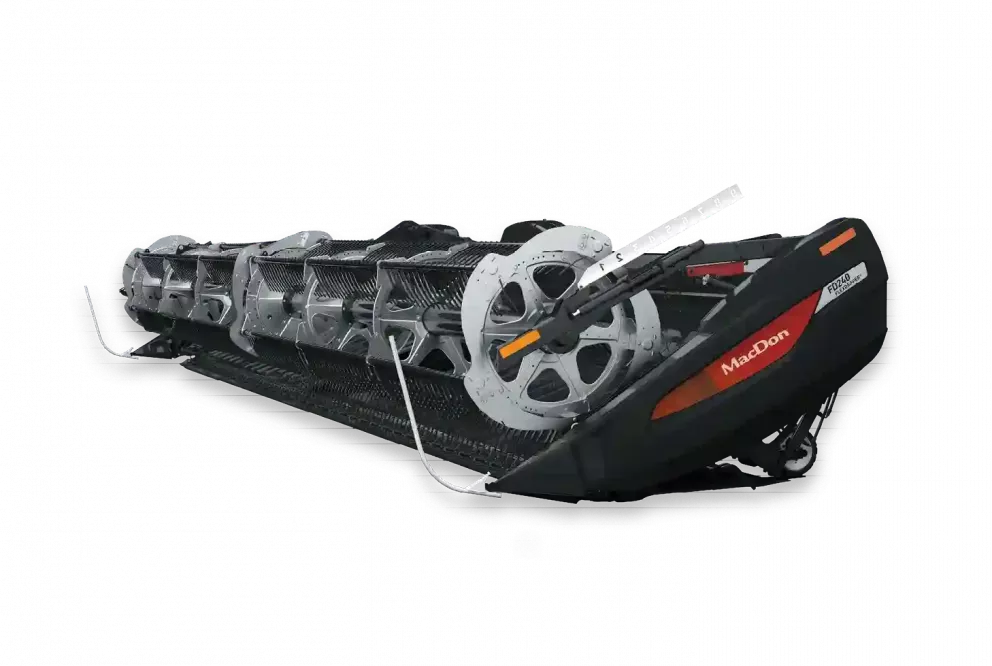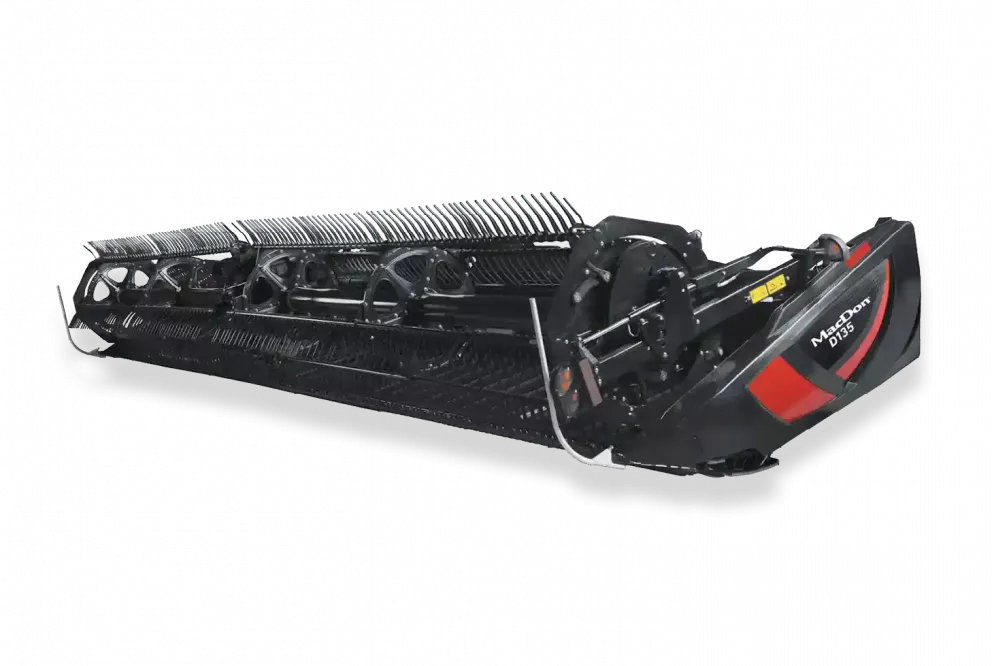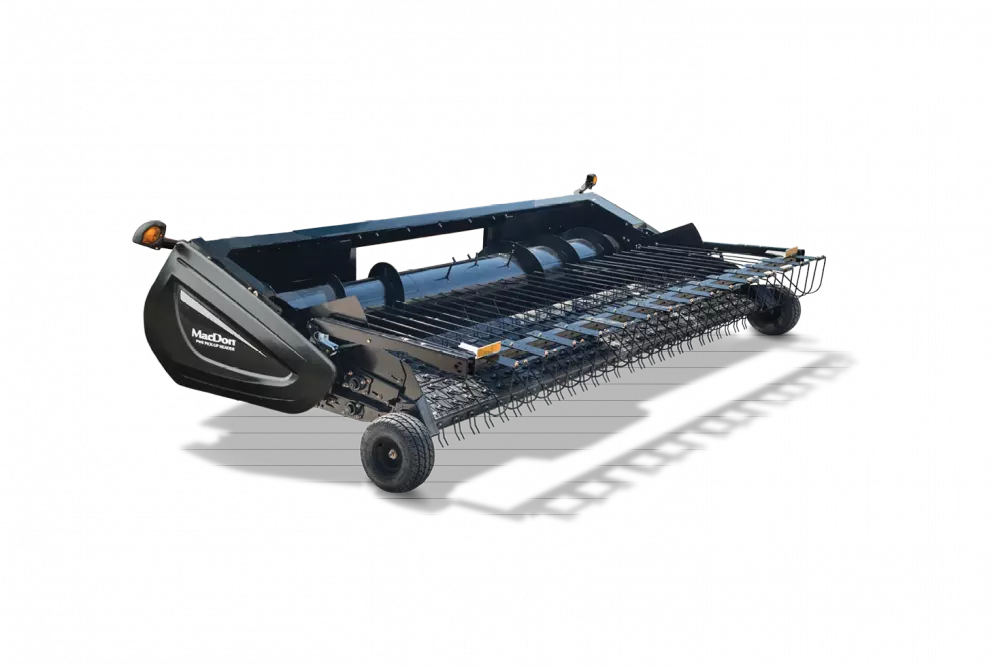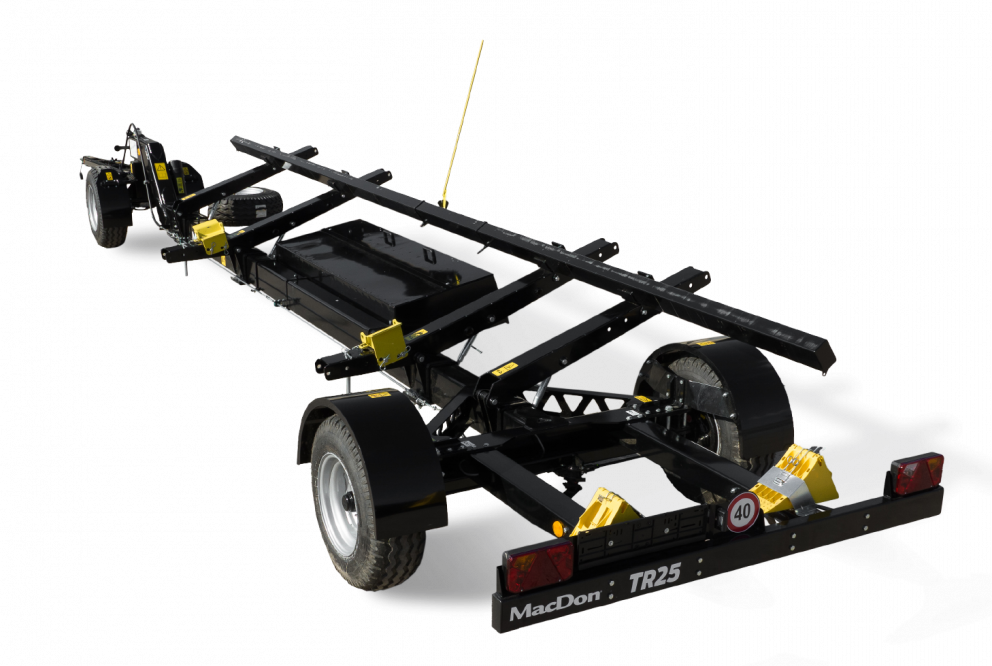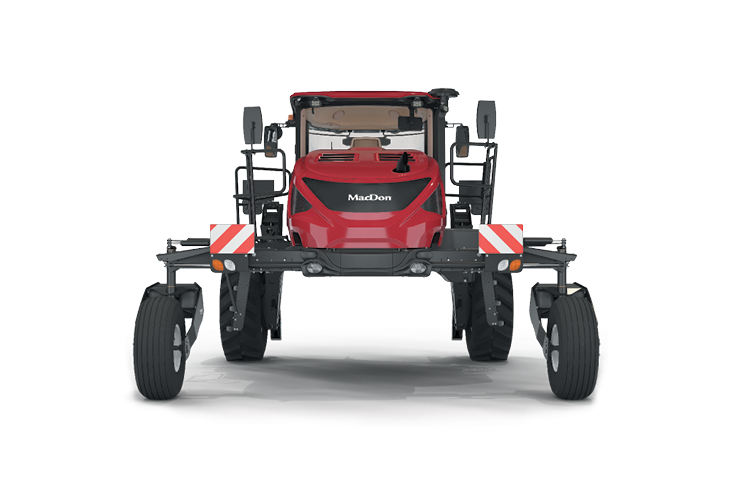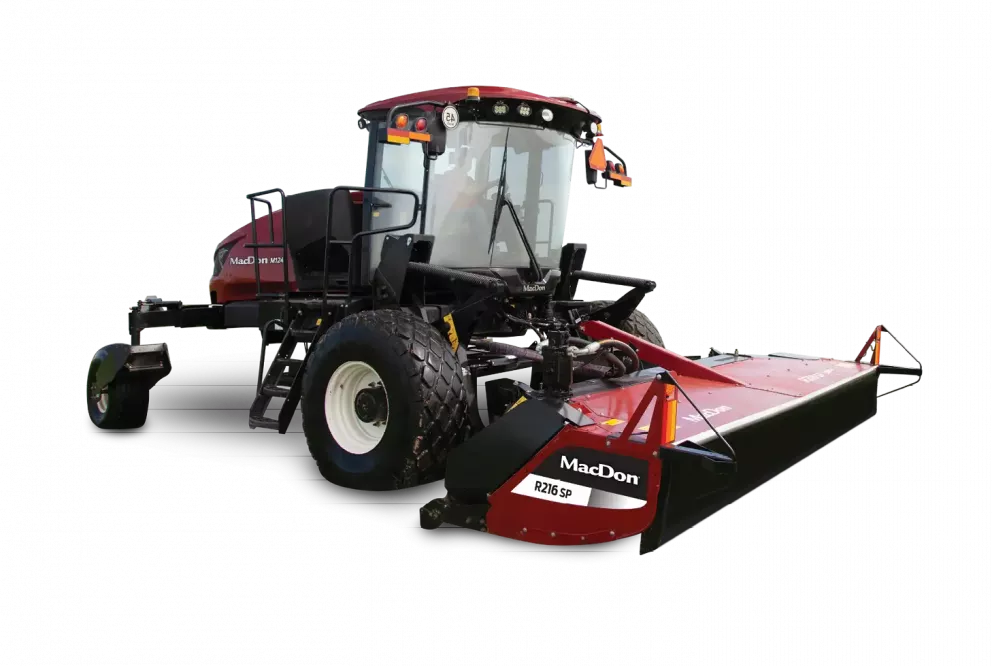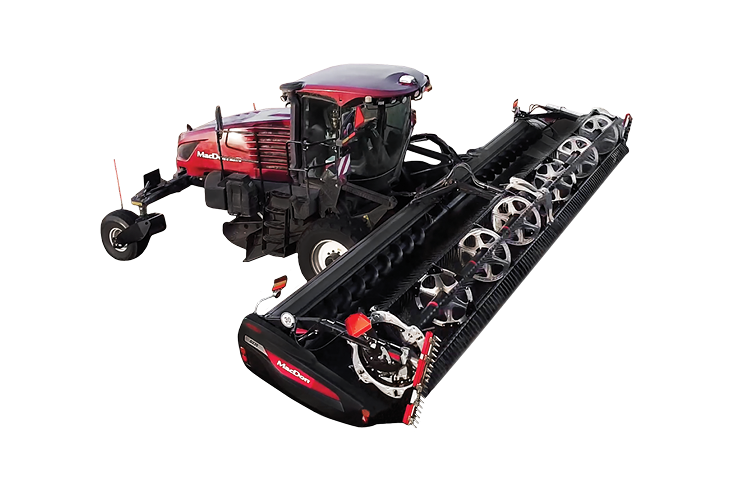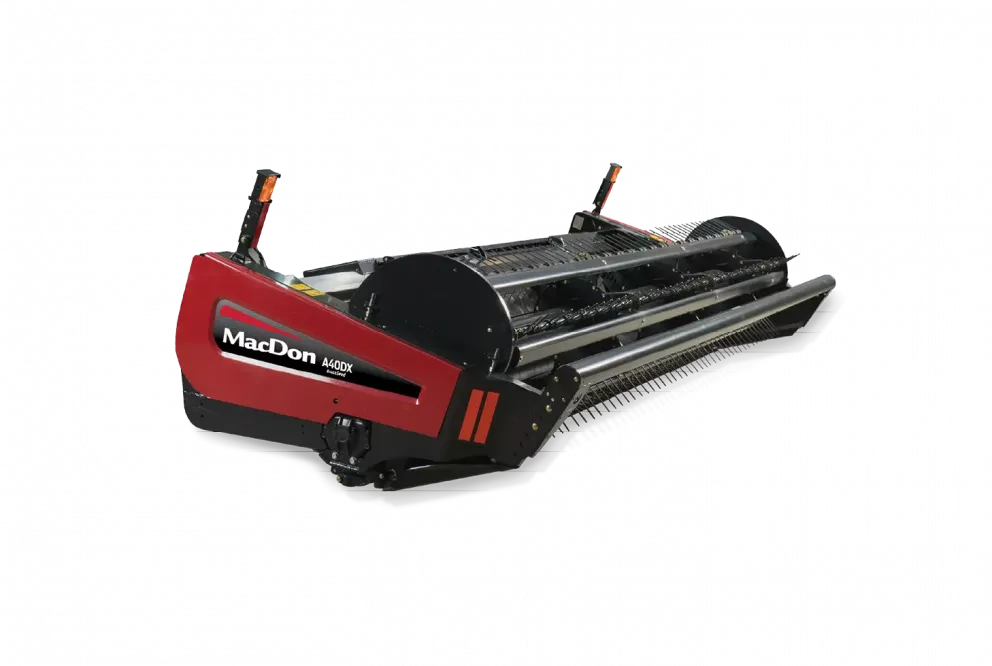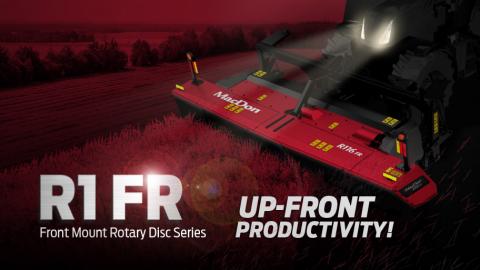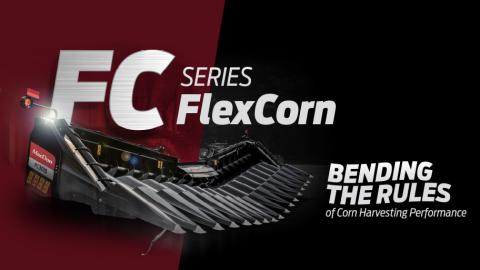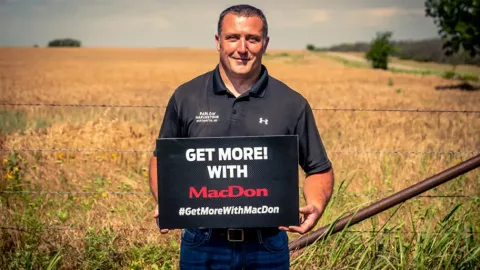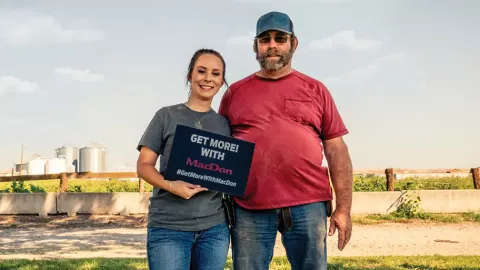Don Boles
“One of the kids that rents my land calls me the geekiest over 60 guy he knows,” says Alberta farmer Don Boles who ‘semi-retired’ four years ago, keeping his combine to cut for the people he rents to.
Boles’ farm, located near the town of Three Hills about an hour and a half drive northeast of Calgary, has been a host for ongoing MacDon product testing since the early 90s.
“It was me who reached out first to MacDon about the testing. I’ve hardly ever owned a major piece of equipment that I didn’t become involved upstream with the company in some way or another, either in research and development or trying out parts and stuff. Over the years, I’ve worked with New Holland, John Deere, and CLAAS.”
Today, Boles still trials new products for CLAAS and MacDon, all part of his need to be at the forefront of agricultural technology.
“If it wasn’t for being able to test equipment, I’d probably quit altogether. It wouldn’t be interesting anymore. It’s that opportunity to be at the bleeding edge that keeps me going.”
Boles defines the bleeding edge as a product still in the R&D phase, about three to five years before it hits the market when it becomes cutting edge.
MACDON HAS BEEN MAKING DRAPER HEADERS FOR COMBINES FOR 30 YEARS, AND EVERYBODY IS STILL HAVING TROUBLE CATCHING UP TO THEM.
“I think that I am a pretty decent tester of equipment because I pay attention to detail. If something is junk, I will say it’s junk. I mean, if you are just going to have them bring out a product just so you can have free use of it, and then blow smoke at them and tell them how good it is, you are not being much use to anyone. My ultimate interest is in building better equipment for everybody.”
While Boles doesn’t test equipment for MacDon every year, since 2005, he estimates that he has had MacDon prototypes on his farm at least every other year. That frequency has allowed him to get to know many MacDon employees quite well.
“MacDon has been much more involved to work with than other companies that I have tested for. Because it is smaller, it has much more of a family feel about it, and you get to know some of their people very well. I’ve become friends with a lot of them, especially Richard Kirkby, who has probably spent 150 nights in Three Hills over the last ten years. Good thing he likes the Best Western there.”
Boles says that he has always been impressed by the quality of MacDon personnel sent to his farm.
“It’s almost like MacDon gives their people some kind of PR course on how to deal with the public, or they just are very good at picking people that get along with others. That’s a huge plus when you are testing equipment because if you are not getting along with people, you are not going to communicate well or get the honest feedback that you need.”
While the enormous benefit of farmers like Boles to MacDon is self-evident, Boles is adamant that the value flows two ways.
“It’s something that Richard and I have talked a lot about over the years - that it’s important there be a two-way street between them and me; they get something from me, but I also get something from them. For me, it’s great to have a guy around who is directly involved with building the machine I’m testing; you get to learn stuff you had no idea about, stuff that’s not in the owner’s manual. You can then employ what you learned so that you are taking full advantage of your equipment, and that can be a big benefit to your operation.”
As important as getting the most from his equipment is to Boles, he also admits to another benefit he gets from testing; the little jolt of pride he feels seeing some of his ideas show up in the final product.
“Many of my suggestions have been used, and I think that is why they have enjoyed working with me. One idea of mine that showed up was the height gauge on the D Series Header. I was told that they called it the Don Boles height gauge internally.”
One thing that has impressed Boles about MacDon is how relentless the company has been in pushing forward draper header technology for combines, something that has been of benefit to agriculture in general.
“Changing to straight cutting cereals was a mindset change for all of us. We could have been doing it earlier, but before MacDon introduced that draper it wasn’t always feasible. The auger headers back then were a real pain to work with, and I remember a neighbor of mine saying in ’89 after he had just bought a new combine with an auger header ‘it’s the best 30 foot bulldozer I’ve ever bought.’”
Now Boles just shakes his head at anyone who doesn’t run a MacDon draper on their combine.
“A lot of my friends did go to other headers, and it has been really funny to watch them come back to MacDon headers. It’s actually been gratifying to be able to say to them, ‘I stuck with it guys, I told you.’ After all, MacDon has been making draper headers for combines for 30 years, and it shows. They have just mastered the art way better than anyone else, and everybody is still having trouble catching up to them.”
According to Boles, the reason for that leadership position is the extended amount of time MacDon spends working with and listeningto, farmers like him.
“From what I have observed, I would have no reservations saying that MacDon invests more in R&D than most other ag manufacturers. For the size of the company that they are, they spend more time testing their equipment with farmers than the bigger companies. Plus, they have surrounded themselves with really good engineers and R&D people to develop the product. No question, they put more effort into R&D than other companies.”
It’s a mindset that someone like Boles, who is always looking for the next best thing, can appreciate.
“No matter how good you think something is, you can always improve it.”
